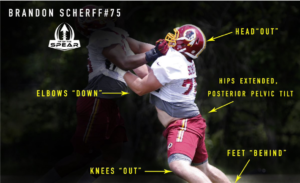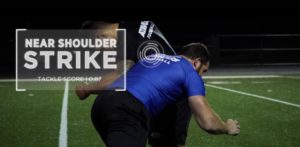BRONCO SAFETY PROTOCOL
(click on link for more information)


The game of football (like rugby, wrestling, lacrosse, hockey), is a collision sport; and as such, injuries are an inherent risk of the game. However, we believe that injuries, specifically concussions, can be significantly limited and reduced through systems and processes that aim to educate, prevent and help the athlete recover safely. To that end, the RB Football Program, youth and high school levels, has adopted the following 3-Tiered Safety Protocol.
Education
In addition to educating players about the risks of dehydration, heat stroke, and staph infection, Bronco Coaches/Staff will dedicate time at the beginning of the season to educating their players about concussions, symptoms of a concussion, and the dangers of not reporting symptoms of a concussion. We will also teach ways to minimize risks of a concussion.
Prevention
- Strengthen: Coaches will commit to strengthening our players’ necks before and during the season. Research has proven that a stronger, thicker neck reduces force transferred to the brain from a collision.[1] The recommended exercises should be done 2x each week and include: DB shoulder shrugs, Isometric neck resistance in each direction (forward, backward, right, left), and Lateral extensions/flexion in each direction,
- Technique: Coaches will commit to teaching rugby-style tackling, and SAFE Football blocking techniques.
- Bronco Football players will be taught rugby-tackling techniques used by the Atavus Tackling System as well as USA Football, designed to keep the players’ head out of the tackle.[2]
- Bronco Football players will be taught blocking techniques used by SAFE Football, which focuses on using hand and hip leverage to block instead of leading with the head.[3]
- Practice: Each level will operate a bit differently, but the emphasis will be to use proper position, technique and thud tempo (in which there is a clearly defined winner) instead of live contact drills.
- High-Risk drills that de-emphasize technique and position, and emphasize collision for collision sake will be removed from practices.
- Equipment: The RB Football Program has made efforts to equip as many players as possible in SpeedFlex helmets, which is highly rated for safety. The High School program also offers Guardian caps for players to wear during practice. Last, our Varsity team outfits a few players, who experience the most collisions, with Riddell helmet sensors, which tracks collision frequency and intensity throughout the week.[4]
Recovery
- Removal: If a player exhibits a symptom of concussion (dizziness, headache, nausea, etc.) associated with a collision, the first step coaches will take is to remove the player from participation. The Coach will contact the parents and/or athletic trainer. If a concussion is suspected, the player must be evaluated by a physician before returning to play.
- Return to Play Protocol: If a player is diagnosed with a concussion, he will need permission from a physician to engage in the Return to Play Protocol[5], which will begin when he experiences 2 days without symptoms. The basic format of the RTP typically takes 6 days to complete. If complete with no symptoms, he will be clear for full participation.
- Re-Education: As part of the Recovery process, athletes will meet with their position coach and review/correct any techniques in order to prevent a repeat occurrence.
[1] https://www.sciencedaily.com/releases/2019/01/190116110948.htm
[2] https://www.sciencedaily.com/releases/2018/06/180606132732.htm; https://www.theguardian.com/sport/2018/nov/28/how-rugby-and-the-nfl-found-common-ground-on-concussion
[3] https://www.tipofthespearfootball.com/about/
[4] https://www.playsmartplaysafe.com/resource/helmet-laboratory-testing-performance-results/
[5] https://www.cdc.gov/headsup/providers/return_to_activities.html
